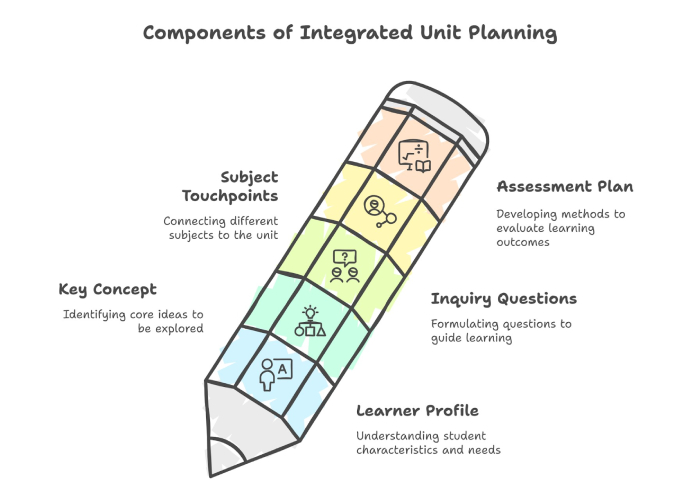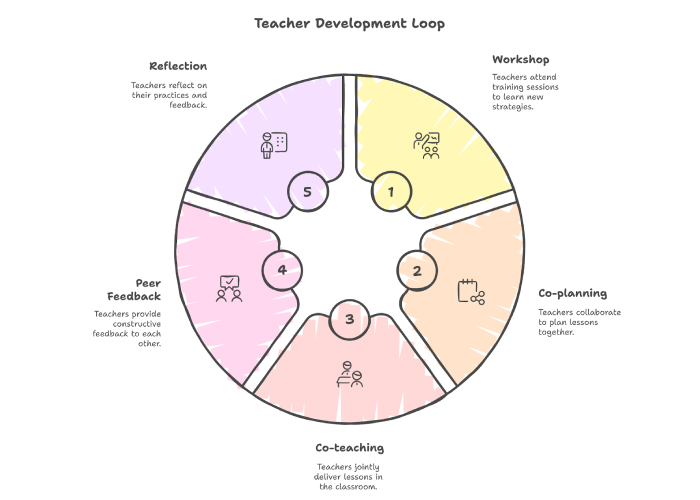IB Curriculum Integration
- Home
- /
- IB Curriculum Integration
Deeper Learning Begins Here: Mastering IB Curriculum Integration in Indian Classrooms
Why True Integration in IB Classrooms Cannot Be an Afterthought
It starts with a feeling. That quiet frustration when teachers sit with carefully printed planners, beautifully mapped units, and yet, something does not connect. The lessons feel rich in isolation, but hollow in sequence. Students complete tasks but struggle to link their ideas. Learning becomes fragmented, and the promise of the IB's real understanding, real inquiry, fades into compliance.
We have heard this from coordinators, principals, and even students. Especially in Indian IB schools transitioning from traditional models, the shift towards integrated learning is not just structural; it is emotional. It demands a rethink, not of curriculum alone, but of belief systems. Because IB curriculum integration is not a task. It is a culture.
At NatureNurture, we have partnered with forward-thinking schools across India to craft integration models that reflect local realities and global standards. This experience reminds us daily: integration is not about changing curriculum documents. It is about changing how schools think.
What Makes IB Curriculum Integration So Unique?
Integration as a Way of Thinking, Not Just Teaching
The IB does not merely encourage subject connections; it insists that we think differently. It asks: What kind of learner are we nurturing? What questions are they holding? And how do we ensure that Maths, English, Science, and Art do not answer in silos but sing in chorus?
For example, a Grade 5 inquiry into "Human Impact" can become:
-
A statistical exploration of carbon footprints in Mathematics
-
A scientific investigation into climate change
-
A visual commentary through recycled art
-
A persuasive campaign in Language to advocate behavioural change
This is not thematic teaching; it is transformative thinking. And it requires courage from leadership and every classroom teacher.
Why Indian Models Cannot Simply Be Repackaged
Many of our educators come from systems that value coverage over connection. The CBSE/ICSE frameworks are rigorous, yes, but often linear. The IB, in contrast, is circular, exploratory, and reflective.
So when schools try to apply old mapping techniques to IB units, they hit walls. Teachers begin planning backwards, from assessments, from checklists, rather than from the child's wonder. Integration here fails not because of intent, but because of method. We must retrain not just skills, but habits of thought

How to Build a Living, Breathing Integration Framework
Step One – See the Learner, Not the Lesson
Integration begins when we stop asking “What do I need to teach?” and begin asking, “What do they need to understand?”
Take a unit on "Migration." In an integrated IB school, this can look like:
-
Mapping global refugee routes in Geography
-
Analysing population data in Mathematics
-
Writing first-person narratives of displacement in Language
-
Exploring identity and belonging in Visual Arts
Each subject becomes a doorway into the child’s mind, not a boundary.
Step Two – Align Thought, Not Just Timetables
We often mistake alignment for coordination. But real integration asks: Are our subjects in conversation with each other? Is the concept maturing vertically across years and echoed horizontally across themes?
When "Sustainability" is introduced in Grade 3 returns as "Climate Justice" in Grade 6 and "Environmental Ethics" in Grade 9, we are not recycling themes; we are deepening perspective. That is integration. And it can only happen through sustained, collaborative planning.
The best schools do not chase new units each year. They refine. Reflect. Realign.

Tools That Support but Do Not Replace Real Integration
Curriculum Mapping with Purpose
Many schools now use mapping platforms to track vertical and horizontal integration. These help ensure that concepts are spiralled, not repeated; skills are scaffolded, not assumed.
But maps are only as good as the conversations they spark. Integration is not a spreadsheet. It is a story we tell about learning.
Hands-On Learning That Anchors Ideas
IB classrooms thrive when ideas meet action. Activity-based learning is not a method; it is a mindset. One school’s interdisciplinary project on water scarcity led students to:
-
Build working models of water filters
-
Research groundwater depletion in their region
-
Draft letters to civic authorities
-
Document their process through film
This was not a science fair. It was integrated, purposeful learning where each subject’s contribution was visible and valued.
Teacher Growth Is the Soil Where Integration Takes Root
You cannot build a culture of integration without investing in those who bring it to life. Indian IB schools must stop outsourcing expertise and start growing it.
Ongoing professional development for teachers, through planning labs, co-teaching models, and reflective dialogues, is where integration matures. A good curriculum partner does not just hand over tools. They walk beside teachers until confidence blooms.
At NatureNurture, our school transformation programmes place teachers at the centre, because without their voice, integration cannot breathe.
Integration thrives when teachers feel seen, supported, and trusted to take risks.

Closing Thoughts: Integration as Identity, Not Initiative
In a well-integrated IB classroom, magic happens. A child connects her artwork to a science lesson. A teacher links a novel to a historical injustice. A parent sees their child question the world with layered insight.
That is not an academic win. That is transformation.
IB curriculum integration is not about adding connections. It is about restoring coherence. It is about teaching children, and ourselves, that knowledge is not scattered, but whole.
And when we get that right, we do not just meet a standard. We honour a purpose.
Looking to make this vision real in your school?
NatureNurture partners with schools across India to build meaningful, integrated IB frameworks rooted in your context. From deep curriculum design to teacher empowerment and classroom innovation, we walk the journey with you.
Reach out to NatureNurture today and let us co-create an IB experience where learning is not just aligned, but alive.
©2025 NatureNurture

